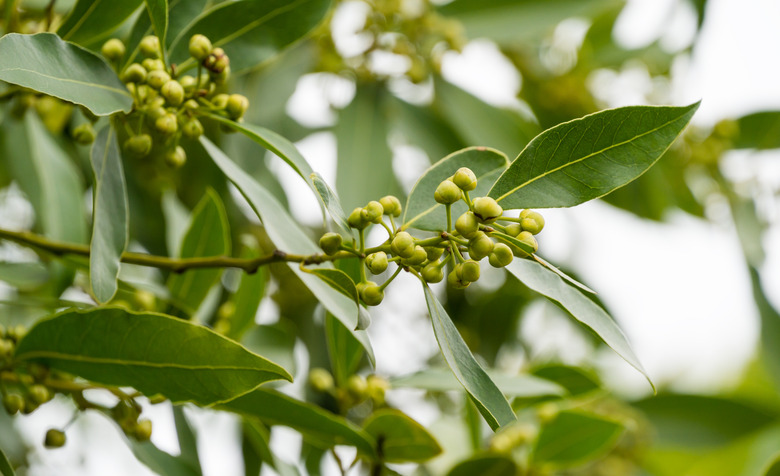Bay Laurel Tree Diseases
Bay laurel trees (Laurus nobilis, USDA zones 8-10) are used in a variety of herbal remedies, and they're not subject to very many diseases. These remedies take advantage of this tree's vigor and attempt to use it to your health's advantage. Even if you do not personally prefer to eat or drink your bay laurel leaves, you may still enjoy its long, evergreen foliage. However, if you are not aware of the signs and symptoms of the few bay tree diseases out there, you may find that you have a suffering or dying bay laurel tree on your hands before you have a chance to save it.
Brown Spots on Bay Leaves
Bay anthracnose is one of the bay leaf diseases caused by a fungal infection that attacks the bay laurel tree from the inside but visibly manifests itself in the leaves. First, the tips of the leaves will turn dark brown or black, followed by the remainder of the leaves. The tip will begin to gray as brown spots on bay leaves appear, and leaf eventually dies. Left unchecked, an anthracnose infection can lead to leaf loss and defoliation as well as the death of twigs and branches as the fungal infection breaks the tree down.
To control the infection, use sanitized pruning shears dipped in isopropyl alcohol to remove affected leaves and branches, and then monitor the tree for further signs of trouble. You can also treat the tree with a fungicide and limit watering to early morning hours, and only when the soil is dry. If the tree continues to suffer, you may need to remove it to prevent infection of other trees.
Bay Laurel Black Leaf Tips
Phytophthora ramorum is a fungal infection like anthracnose, and many of the symptoms of these two diseases are similar. This infection also starts out with black leaf tips, and as the leaves die they may become outlined in yellow before they turn brown, black and then gray. However, P. ramorum can also start out as black spots in the middle area of the leaf that blotch until they destroy the leaf from the inside out.
As the leaves fall, you may notice trouble with the branches as well. As with anthracnose, remove affected limbs and foliage using pruning shears wiped with isopropyl alcohol, and treat the tree with a fungicide if necessary. Berkeley University of California reports that there are no reported cases of bay laurel tree death due to P. ramorum.
Bay Laurel Psyllids
Psyllids are insects that look like miniature cicadas. The University of California notes that they're also known as the jumping plantlice. These tiny insects infect bay trees and live in nooks and crannies in the bark during the winter. Although psyllids are an insect and not a disease, they cause symptoms that resemble certain diseases. They create thick, yellow lesions on the leaves, which cause the leaves to yellow and curl around the edges.
Bay psyllids can be eradicated by washing the undersides of bay leaves with insecticidal soap or by removing affected leaves and branches. While bay psyllids will not kill your bay laurel tree on their own, they can lead to a variety of problematic secondary infections that can hurt or kill your bay laurel.
